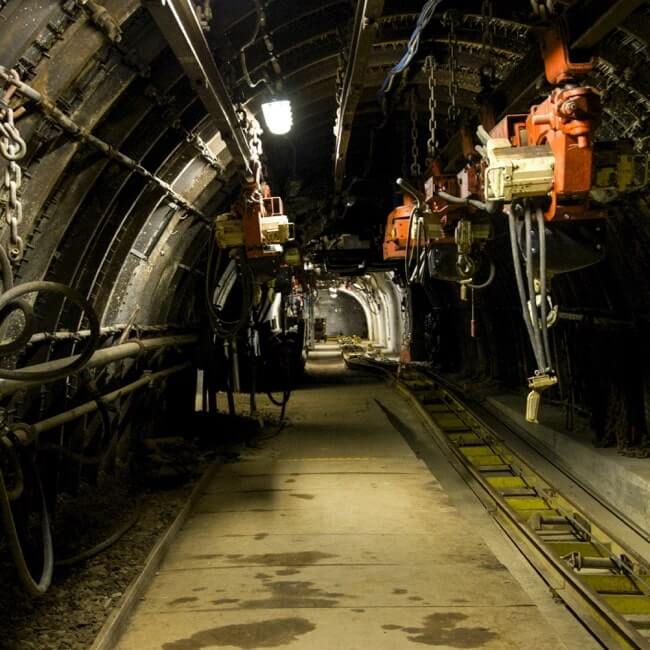Amid drought, Tenaris chief outlines win-win gas solution for Argentina, Brazil

Argentina could help Brazil mitigate the impact of a lengthy drought that is curbing hydroelectric production and, at the same time, develop an outlet for domestic gas, an upstream supplier said.
Over the winter months, Argentine gas production feeds the local market, but when the weather turns warmer and demand falls – around October – gas is typically available for export.
Some of this excess could be piped to Brazil or used to generate power in Argentina for export, said Javier Martínez, chairman of steel tube maker Tenaris’ Southern Cone region. In this way, Brazil could ease pressure on stressed reservoir levels and let them recover, he added.
In Brazil, hydroelectric plants account for around 60% of the generation mix. Water levels in the country's southeast/center-west subsystem are at 22.5% of capacity, while in the South subsystem they are at 29.8%, Luciano Codeseira, director of consultancy Gas Energy Latin America for Argentina, told BNamericas.
Brazil has been boosting thermoelectric output, including from fuel oil plants, to help keep the lights on and is launching voluntary power rationing programs for regulated and free power market consumers.
“One could consider that Brazilian dams could be a way of storing Argentine gas,” Martínez said during a suppliers-focused conference hosted by local media outlet EconoJournal.
Martínez said exporting to Brazil constituted a huge opportunity for Argentina. Another factor playing to Argentina’s advantage in the regional exporting stakes is falling production in current vendor Bolivia, generating market space.
Codeseira said: “The drought in Brazil presents an opportunity for Argentina, which needs demand.”
He added, “this is about an immediate opportunity – it implies demand for gas for generation in the coming months, just when the high-demand winter season comes to an end – and future opportunity, via a reassessment of the importance of firm gas for the coming years.”
In terms of imports of Argentine electricity, Brazil may require up to 2GW of associated capacity, which represents consumption of around 10Mm3/d (million cubic meters per day) of gas, Codeseira said.
Codeseira, also CEO of US-Argentine research advisory firm Ceibo Growth Strategies, said the current situation could sharpen Brazil’s focus on Argentina as a long-term supplier.
“This situation also reassesses the role of Argentine gas in Brazil. Recall that [President Jair] Bolsonaro said his country was in talks with Argentina over the construction of a pipeline to transport Vaca Muerta gas. This isn’t new but it could prioritize the [planned Argentine] pipeline to the coast – now called the Néstor Kirchner – if Brazil accelerates infrastructure work it must carry out in its own territory.”
Work in Brazil involves building a pipeline from Uruguaiana, on the Brazil-Argentine border, to the coastal city of Porto Alegre.
Together, the Argentine and Brazilian projects would require billions of dollars in outlay. Work would help boost export and transport capacity, the latter a key issue that needs addressing to support continued growth in output from shale play Vaca Muerta.
Argentina is considering using revenue generated by a wealth tax to help pay for the Néstor Kirchner duct, EconoJournal reported this week. Talks are also underway with potential Chinese backers. The government has other pipeline infrastructure projects on the drawing board, which may be executed under the public works model.
Meanwhile, a hurdle in terms of firm exports of Argentine gas to its regional neighbors is regaining their confidence, Martínez said. Argentina halted exports to Chile in the mid-2000s when its own supplies ran low.
An associated risk factor is the increased demand being placed on thermoelectric plants in Argentina – also suffering from lower-than-normal precipitation – and how that may impact availability of energy exports. Argentina’s hydroelectricity production in June was 1,818GWh, down 48.7% year-on-year, according to wholesale power market administrator Cammesa. Thermoelectric generation in July was 8,431GWh, up 21.0%.
Argentina exported 161GWh of electricity to Brazil in July, up from 0GWh in the same month of 2020.
In February, Argentina resumed gas exports to Brazil after a six-year hiatus, offering up to 2.4Mm3/d to feed the 640MW Uruguaiana gas-fired power station. In a statement issued at the time, the Argentine government said gas would be exported when not needed to meet domestic demand. The deal would generate foreign currency inflows of up to US$500,000/d for Argentina, the government said.
Argentina sits on a wealth of natural gas reserves, chiefly those in the Vaca Muerta shale formation. Tapping them fully would require developing stable export markets, which, in turn, would encourage E&P investment.
During the winter months, Argentina currently relies on Bolivian gas and costly LNG imports to cover demand. Output is growing, however, following the implementation of gas incentives program Plan Gas.
Subscribe to the leading business intelligence platform in Latin America with different tools for Providers, Contractors, Operators, Government, Legal, Financial and Insurance industries.
News in: Political Risk & Macro (Brazil)

What does the US anti-corruption shift mean for Latin America and compliance?
Michel Sancovski, a partner in the anti-corruption & compliance practice at Tauil & Chequer Advogados, a Brazilian law firm associated with Mayer B...

New ethanol tariffs reignite old US-Brazil trade battle
According to experts consulted by BNamericas, the dispute could have negative impacts on both countries.
Subscribe to Latin America’s most trusted business intelligence platform.
Other projects
Get key information on thousands of projects in Latin America, from current stage, to capex, related companies, key contacts and more.
- Project: Rehabilitation and Improvement of Route No. PE-08, Section Ciudad de Dios - Chilete
- Current stage:

- Updated:
1 day ago
- Project: Block I
- Current stage:

- Updated:
1 day ago
- Project: Rancagua - Machalí tramway
- Current stage:

- Updated:
1 day ago
- Project: Western longitudinal avenue (ALO), south section
- Current stage:

- Updated:
1 day ago
- Project: Field Camarão Norte
- Current stage:

- Updated:
1 day ago
- Project: Block ES-T-345
- Current stage:

- Updated:
1 day ago
- Project: Field Piaçabuçu
- Current stage:

- Updated:
1 day ago
- Project: Block REC-T-145
- Current stage:

- Updated:
1 day ago
- Project: Block REC-T-71
- Current stage:

- Updated:
1 day ago
- Project: Block PN-T-114
- Current stage:

- Updated:
1 day ago
Other companies in: Political Risk & Macro (Brazil)
Get key information on thousands of companies in Latin America, from projects, to contacts, shareholders, related news and more.
- Company: Agência de Transporte do Estado de São Paulo (ARTESP)
-
Created in 2002, the São Paulo State Transport Agency (ARTESP) is in charge of overseeing public transportation for Brazil's São Paulo state. Working under the Secretariat of Go...




